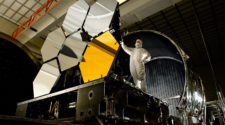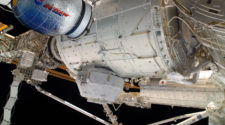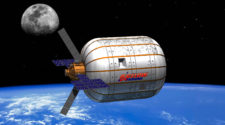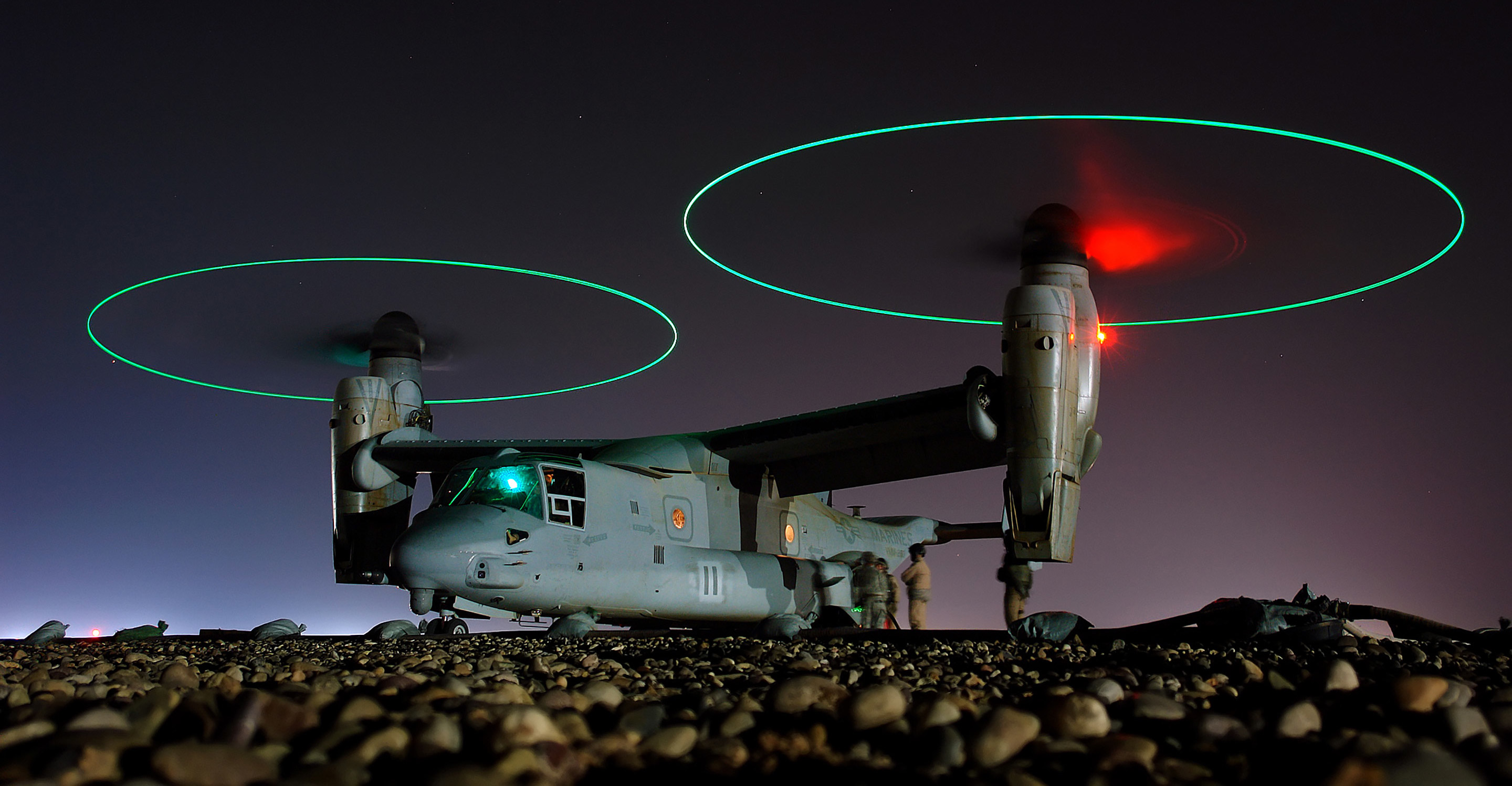
What do you get when a talented female engineer is one of the masterminds behind the design of an aircraft crossed between a helicopter and a jet fighter?
There exists a sort of “hybrid” military, tiltrotor aircraft that takes off and lands as a helicopter, and flies like an airplane. The Bell Boeing V-22 Osprey was designed by a team of engineers at Boeing to fulfill the needs of all four United States armed services in the Defense Department.
A tiltrotor aircraft creates its lift and propulsion with powered rotors (sometimes called proprotors) mounted upon rotating engine pods (or, nacelles) located at the end of fixed wings. When they are tilted forward they act as propellers to enable the V-22 to fly as an airplane, but when they tilt up, the aircraft performs landing and takeoff in the same way as a helicopter would.
A woman whose hands and mind have helped mold the V-22 into this multi-functional aircraft is Jackee Mohl, a structural engineer at Boeing. Mohl graduated from Massachusetts Institute of Technology (MIT) in 2008, where, in addition to her studies, she was captain of the MIT Women’s Swim Team and held positions within the Society of Women Engineers MIT section.
Upon graduating from MIT, Jackee took a position at Boeing with the V-22 Osprey Helicopter Stress Analysis Group after interning with them for two summers in college. In late 2009, she assumed the position of Stress Lead for the V-22, where she remained through July 2012. Additionally, Mohl led the V-22 Engineering Producibility Tiger Team that worked on improving producibility issues in manufacturing, and was the focal for composite material allowable development for the V-22. Currently, Mohl has a role in supporting a proprietary program based in Saint Louis while she works in Philadelphia.
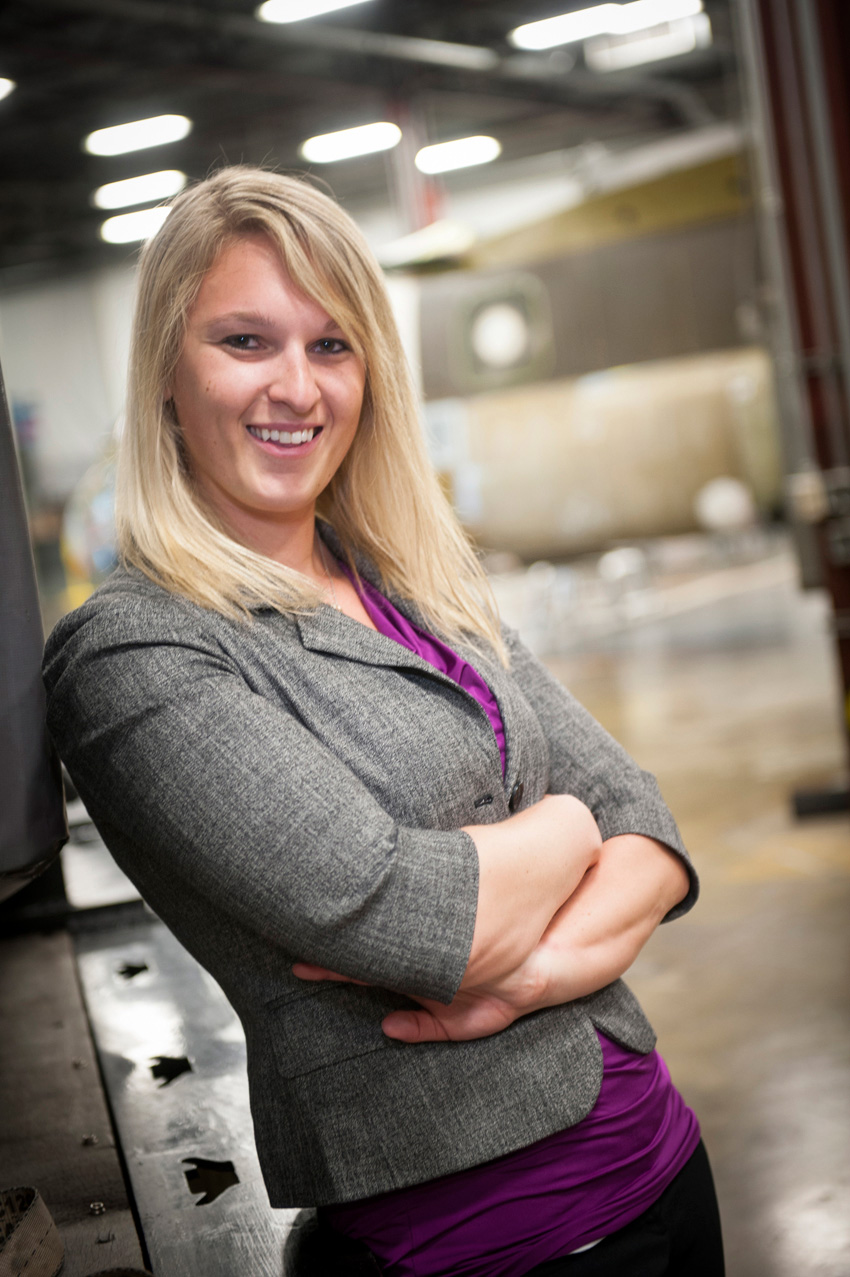
In addition to working for Boeing, she is the chair of the Boeing-Philadelphia Diversity Council which won a Boeing Global Diversity Change Agent award in 2012 while she lead it, She also co-organized the annual Boeing- Philadelphia Kickball Tournament as part of the ‘Boeing on the Move’ program, which has over 500 participating employees.
As a member of the Boeing Military Aircraft (BMA) Emerging Leaders Development Program’s class of 2014, she led a special projects team, which focused on obtaining and managing projects with a significant business impact for BMA.
Mohl took the time out of her busy schedule to speak with RocketSTEM on her position at Boeing, the V-22, education, STEM outreach and extracurricular activities.
Q: How did you get involved in subjects not traditionally thought of as “geared towards girls”?
Jackee: Throughout my entire life, I have been interested in math and science. I also have a sort of ‘beat the boys’ mentality. I wanted to prove that girls could do everything people thought only boys could do, even through my years as a middle and high school student. In high school, my Physics teacher became a mentor for me as I continued being drawn to math and science.
I have always been interested in how things work, and the principles behind how our physical world is governed. Based on that, I explored different career paths I could take and engineering was the one that combined my love of both subjects and used them for real world application.
Q: What kind of student were you in high school and what led you to attend Massachusetts Institute of Technology (MIT) for Mechanical Engineering?
Jackee: I maintained an ‘A’ average – I worked extremely hard. I was also a swimmer, so I swam 3-4 hours per day. Academics were always my number one priority, though. They were always what I strove to be the best in. Aside from liking math and science, I also had a natural knack for it, and I excelled at both subjects in high school.
MIT was not only the top engineering school in the country, it was also my dream to go there to take on the challenges the courses and professors presented to the students. I applied during my senior year of high school, and was accepted into what became an extremely rewarding experience. At that point in my academic career I had never received near the challenge academically as I did at MIT.
I polled upperclassmen to see what each major offered. I ended up choosing Mechanical Engineering because it was the most general of the engineering majors. I wasn’t one hundred percent sure exactly what I was going to do, but I knew that degree would give me the option to go into many different industries to learn. What everyone considers when you think of an engineer, is usually a mechanical engineer.
Q: How did you become a structural engineer with Boeing?
Jackee: It was my position as an intern. Boeing is great about getting you involved in real projects that are happening – you are not just going around fetching people coffee – you are actually getting hands on experience with the aircraft.
Structural engineering very much spoke to my natural love of problem solving. Growing up, I loved math and science, and trying to figure out the answer to a problem I would see. That is what engineering is like, especially in structures. A problem will come up, we ask ourselves how we can solve it, and how we can make the product better.
Q: What do you do with the V-22? What is something “cool” about this aircraft?
Jackee: Since I am a structural engineer, I work on the design and structures of the aircraft. The greatest aspect of the V-22 is the fact that it is a transitional aircraft. It can be both a helicopter and an airplane at the same time.
Seeing the results of that in the field is pretty remarkable – the missions they can do – with this capability that they have never been able to do them with before.
Aerospace companies are always looking to the future. We are creating that future by asking ourselves what improvements we want to make down the line.
Q: You do a lot of STEM outreach, focusing on getting girls involved. Can you elaborate on this?
Jackee: I am an officer in the local chapter of society for Women Engineers and through that, we do a lot of work with Girl Scouts.
There are two main things we do. First, we do two engineering mini camps per year for high school girls. These students are from all over the tri-state area (Pennsylvania, New Jersey and Delaware plus Maryland, New York and Ohio). They come for a day and participate in different engineering projects taught to them by professional engineers and engineering students.
Last year, I was able to show a bridge building program to the students demonstrate how different trusses and bridges work – and also, how it relates to the structural side of airplane design as well. I also did a roller coaster design lab where the students were able to use foam tubes and marbles and design different roller coasters to see how fast and far they could go. It really opens girls’ eyes to the more fun aspects of engineering!
In addition to STEM outreach, the Society for Women Engineers does professional development for female engineers. We do different monthly meetings, talk about work and life balance, different technical topics. For example, last year, we talked about what kind of engineering goes into the Olympics.
Q: What would you tell a struggling student? One who lacks the math and science background, but so badly wants to do it. What is your advice?
Jackee: Some of the best engineers are people who have really good hands on understanding of how things work. Taking things apart, seeing how they are made, putting them back together – I know tons of people through high school and college that didn’t have the book smarts or academics in that way, but they were so smart with knowing how things work. People that think like that make some of the best engineers.
A student is always going to need to get through the required course work, and working hard helps, but also if they try tinkering around with things at home (with parental permission, of course!), it will help them gain a better understanding of how things function. Students can become researchers, teachers and engineers.
Q: You live in Philadelphia – are you an Eagles fan?
Jackee: Yes! Born and raised just outside of Philly – so all Philly sports teams! I am a big sports fan especially college basketball! Oh everyone is going to hate me but I like Duke!
In my freshman year of college, in Boston, the Patriots were in the Super Bowl with the Eagles. The Eagles lost that game, and of course I was there in all of my Eagles gear.
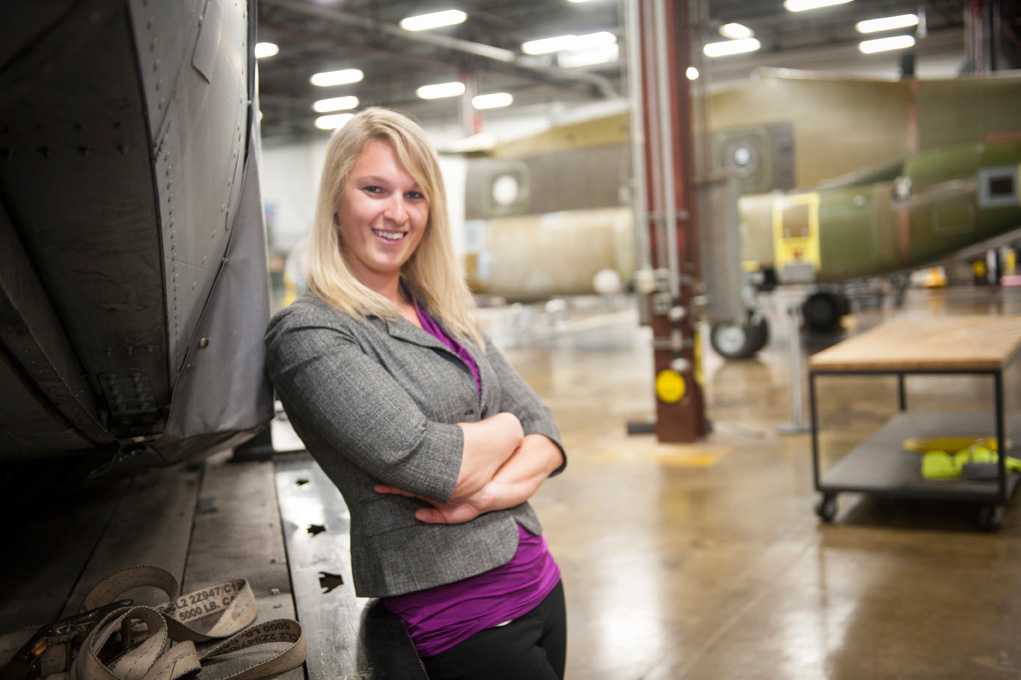
Q: Well, I am a Steelers fan…
Jackee: I like Pittsburgh, actually!! I went there to the Carnegie School for Science during the summer before my senior year of high school. As a matter of fact, that is where my husband and I met!
Q: I hear you are a runner, how involved are you?
Jackee: I do marathons, but I am not very fast. I am coming up on my fourth marathon training. I really enjoy it, it is a great way to release the day and have time to yourself, and to be outside.
Q: Can you tell me a little bit about the V-22 aircraft?
Jackee: The first time I saw the V-22 fly, it was a really awesome experience, being able to see it take off like a helicopter, then all the sudden fly like an airplane. It was really very cool to be able to witness that.
There is an interesting fact about people who work for aerospace companies – you could build these things all day long, but to see one fly- we all flock to see them fly. There is nothing more exciting for us than seeing it in action.
Every time they have a flyover, everyone runs outside. We have the Chinook helicopter and the V-22 here and every time I still do this, even though I have seen them fly multiple times throughout the year. We devour reading about what our aircraft is doing. Our aircrafts are doing great humanitarian service. For example, the big rescue the V-22 did last year – we just can’t get enough of news like that.
There is a lot of pride in what we do, it’s really great.
Q: Are people able to tour the facility and see the V-22?
Jackee: It is tough because these are military aircraft, but robotics teams, engineers, students from engineering schools come in and show us their research which is also really interesting, because they sometimes are more cutting edge with the stuff they are doing in colleges. When they come in and show us research, we take them around the factories to show them that Boeing is a really cool place to work and what we do here.
Q: What is something you would like girls, kids, underdogs, etc. to know?
Jackee: Don’t let anybody say you cannot do it because everybody can. And I think girls make some of the best engineers I’ve seen throughout my career here, throughout college. They do some amazing stuff, and our efforts as women can not be underappreciated.
I had the fortune of having mentors along the way tell me that I could do it, and I try to give that back to the girls I now see at my outreach events.
I tell them that they can do it too.
Q: At any point in your career have you felt that being a woman held you back?
Jackee: Never. It has been equal ground the entire time. Never once have I felt like I wasn’t respected. It doesn’t even make a difference here, which is wonderful. It’s really when you are growing up that boys get pushed towards math and science, while girls don’t. Having people push me towards math and science has been the key part to me achieving what I’ve been able to.
Q: So, do you feel that having a mentor made a huge difference?
Jackee: Definitely – not only growing up, but also now at Boeing. I’ve mentored a couple of higher executive women here and now, seeing how much they have accomplished has helped me understand what I want my career path to be, as well. So yes, it has really been essential to my career.
I think this sentiment by author C. Joybell C., “You may not know where you’re going, but you know that so long as you spread your wings, the winds will carry you.”, sums it up quite nicely.
Mohl is a great example of what a strong sense of commitment to a passion can help a person achieve. Not only does she excel in her field with her talent, she takes it a step further by giving back via her outreach efforts. She builds quality defense equipment and inspires girls to head in the direction of their engineering dreams. She may not have had her map drawn up the entire way through her academic career, but she clearly ended up exactly where she was meant to be.
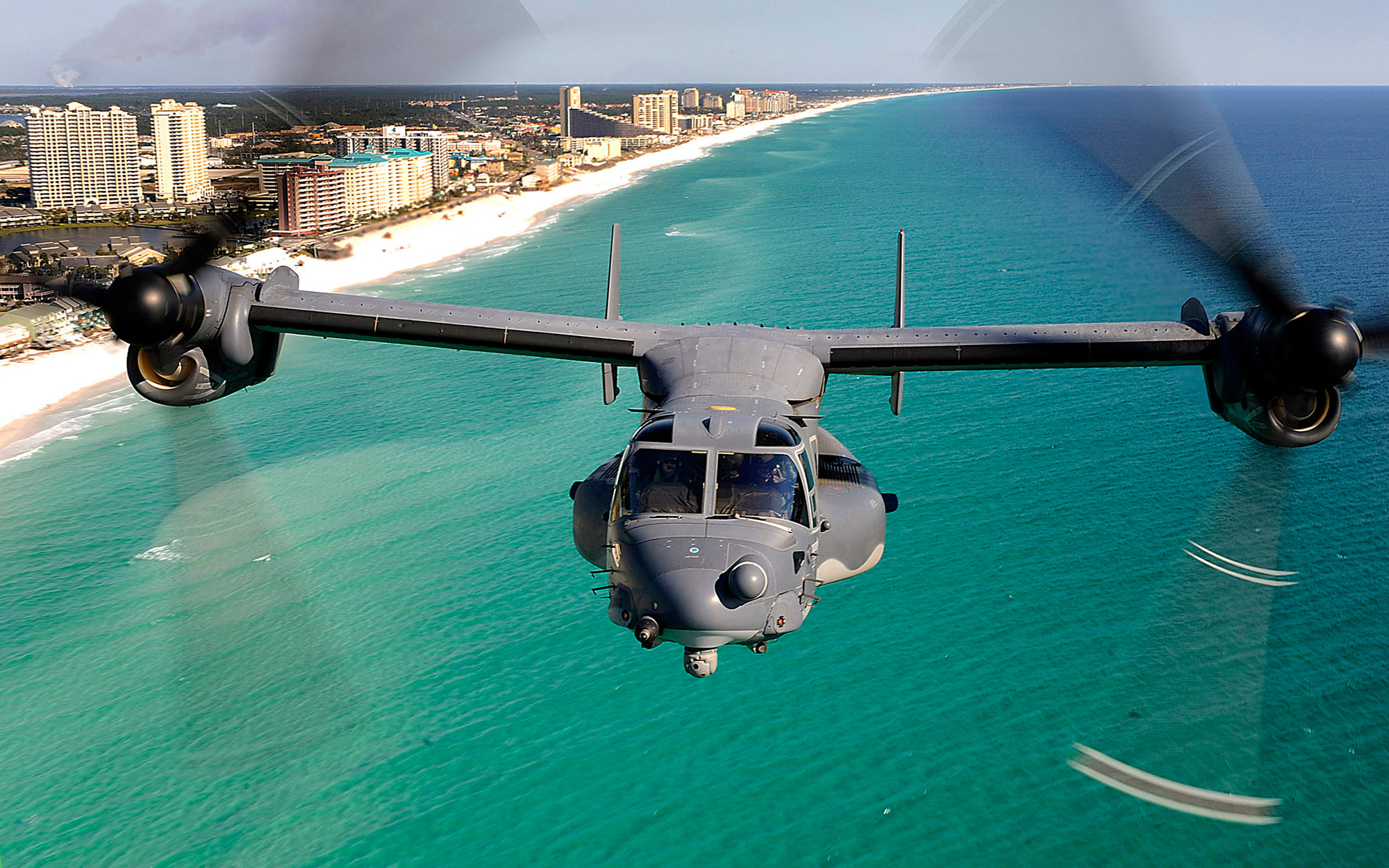
MV/CV-22 Osprey Data File
First Flight: March 19, 1989
Delivered: 2006
Propulsion: Two Rolls-Royce AE1107C turbo shaft engines
Thrust: More than 6,200 shaft horsepower per engine
Accommodation: crew: officer: two pilots; enlisted: two flight engineers
Load: 24 troops seated, 32 troops on floor, or 10,000 lbs. cargo
Length: Fuselage: 57.3 ft.
Width: Rotors turning: 84.7 ft.; Stowed: 18.4 ft.
Height: Nacelles vertical: 22.1 ft.; Stabilizer: 17.9 ft.
Rotor Diameter: 38.1 ft.
Maximum Vertical Takeoff Weight: 52,870 pounds (23,982 kilograms)
Maximum Rolling Takeoff Weight: 60,500 pounds (27,443 kilograms)
Armament: One .50 Cal Machine gun on ramp
Max Cruise Speed: 277 mph
Ceiling: 25,000 feet (7,620 meters)
Mission Radius: 500 miles with one internal auxiliary fuel tank. In flight refueling capable.
Unit cost: $89 million (fiscal 2005 dollars)
Compiled by David Richards from U.S. Air Force documents

